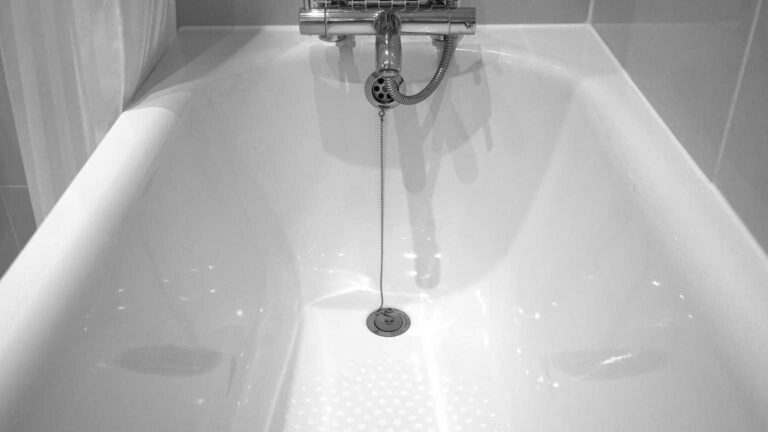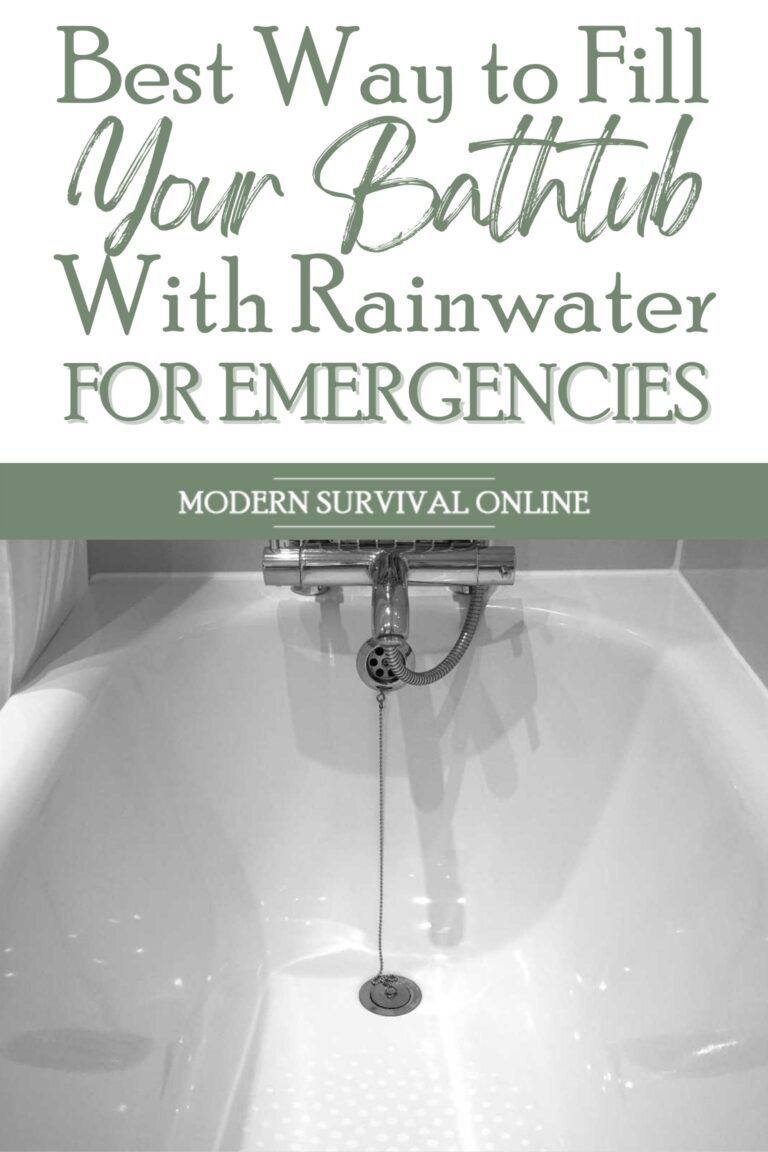Space is always at a premium when it comes to storage space inside your home, even when considering such vital preps as water.

For those of us who already have our homes packed to bursting with supplies, or who just so happened to be living in smaller quarters, coming up with enough space can be quite a challenge.
When it comes to water, however, one of the best storage vessels that every home is equipped with is the humble bathtub.
Now the only question is how to get scavenged rainwater from outside into your home and into the tub.
Overall, the best way to get rainwater from outside your home into your home in order to fill your bathtub is by first collecting the rain water through some other means and then transferring it into the bathtub slowly and surely.
This reduces the possibility of mishaps and accidents while remaining relatively quick and efficient.
Obviously, depending on your specific setup, where you live and other factors some techniques will work better than others.
We will break down several such techniques and the remainder of this article and then you can decide for yourself which is best when it comes to filling up your bathtub with a survival water supply.
Collect and Transport with Buckets
Probably the most adaptable and surest method of filling up your bathtub with rain water is to use the old bucket brigade method.
Note that you don’t actually have to use actual buckets, as any rigid container it is reasonably clean and capable of holding a quantity of water will do the job here.
When it starts to rain, or when you suspect it is going to rain, all you need to do is place as many containers as possible outside in order to catch the rain.
Alternately you can use the buckets to collect the rainwater from other reservoirs before bringing it into the home.
With enough containers, it is easily possible that a lengthy shower could produce more than enough water to fill up your bathtub.
It is worth pointing out that this method is fairly laborious depending on the number of trips you’ll have to make and the size of your containers.
Water is quite heavy, weighing nearly 10 lb a gallon, and if you’re using larger containers like painter’s buckets you could have quite a load.
Multiply that over several trips, especially ones where you might need to go up or down stairs, and it could prove to be a serious workout!
Make this task easier by enlisting family members or others in your survival group, or just keeping yourself in good shape!
Divert a Rain Catcher
This clever method relies upon an existing rain-catching system that is built into a home’s roof and gutters.
Although these systems typically divert into an above or below the ground tank, or commonly into above-ground barrels, some rely on a diverter system to direct the water where the user wants it.
If your rain-catching system has such a diverter, it is possible to implement another spout with either corrugated, flexible tubing or one that steps down into a smaller spigot compatible with common garden hoses and then direct this hose into your home and the bathtub via either a door or hopefully a conveniently placed window.
And don’t worry if you need a long tube or hose, as the force of gravity will easily move the water where you need it to go.
Alternatively, it is possible to rig up an improvised method with a common downspout assuming you construct what you need ahead of time.
To employ this method, all you need to do is disconnect the long downspout tubing and then connect your hose arrangement in its place.
Turning a few screws could allow you to quickly and easily fill up multiple tubs in your home, just make sure you have someone standing by to cut it off when your containers are full or else you’re going to have a small flood inside your home!
Use a Hand Pump Setup
A manually operated pump arrangement can draw water from any sort of reservoir outside your home and into your tub, either by directing its hose through a door or window as described above.
This is the perfect option for moving water from a less convenient outdoor reservoir to an indoor one, or even from an indoor reservoir to your tub for temporary or supplemental storage purposes.
Modern hand pumps are easy to operate, reliable and efficient, perfect for this sort of job. But considering that most bathtubs hold a few dozen gallons of water easily, this could entail quite a lot of pumping, and, once again, a pretty good workout.
Make this job easier by enlisting a work party for the duty, but you’ll have the advantage when using a hand pump and that you can stop the flow of water by ceasing pumping.
ProTip: Always use a Bathtub Reservoir Bag if You Can
On this topic, I would be remiss if I failed to mention one of my favorite prepping resources: the bathtub reservoir bag.
These heavy-duty plastic bags are designed to remain folded up and out of the way until you need them, and then placed into the bathtub when you need to utilize it as primary or auxiliary water storage.
Once unfolded, they may then be easily filled by the nearby spigot if safe and operational, or through any other means by a conveniently located and sealable filling port.
They will hold about as much water as your bathtub will normally but provide several crucial advantages.
First, they prevent loss of water via a leaky stopper or evaporation. Second, they prevent contamination from dust and other airborne hazards, and can also keep small kids and pets out of what is supposed to be a supply of drinking water.
Third, and in my mind most importantly, your water does not come into contact with the bathtub itself.
Yes, it is designed to hold water but the average person’s bathtub is positively filthy with germs and microorganisms that can contaminate and rapidly colonize your water, to say nothing of the fact that the toilet is located directly nearby.
Keep your water convenient, clean and healthful if storing it in the bathtub by using one of these bathtub reservoir bags.
They are affordable and widely available online and in stores that sell survival and readiness equipment. Get yourself one for every tub in your home!
Conclusion
The common, household bathtub can prove to be an excellent improvised water storage solution, but moving water from outside the home to the tub can be quite challenging and lead to a minor disaster in the form of household flooding if one does not know what they are doing.
By relying upon the techniques and methods described above you can quickly and efficiently gather several dozen gallons of water for long-term storage in any bathtub.


Like what you read?
Then you're gonna love my free PDF, 20 common survival items, 20 uncommon survival uses for each. That's 400 total uses for these dirt-cheap little items!
We will not spam you.